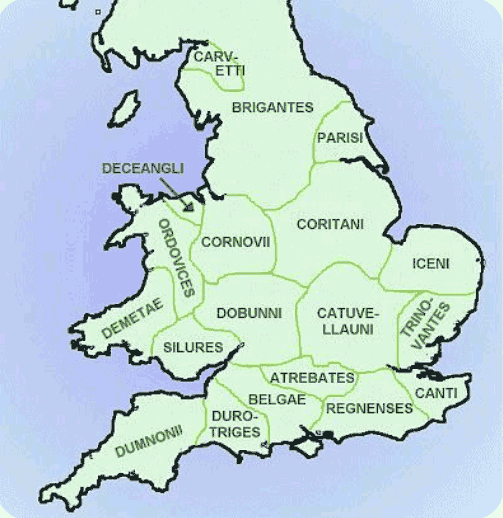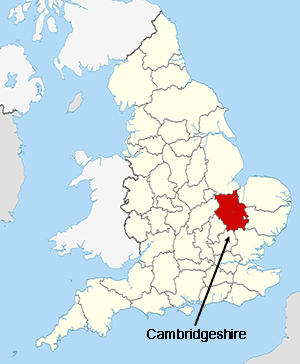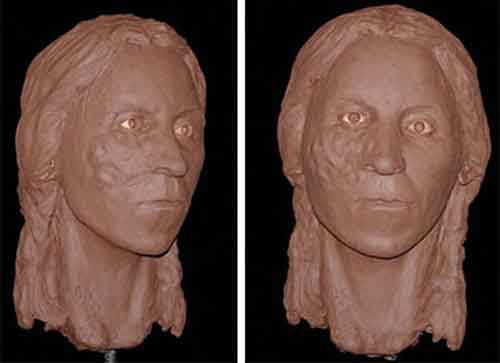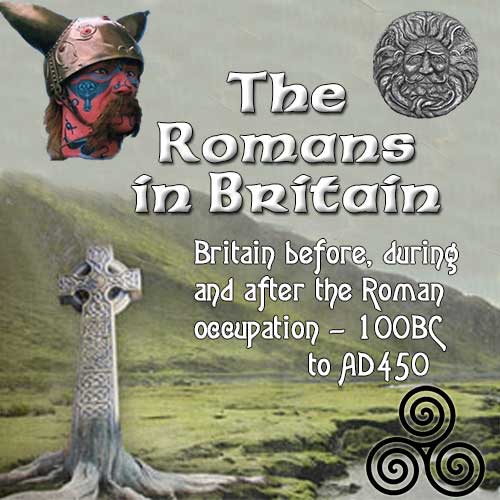Boudicca, Queen of the Iceni

Boudicca, as _I_ always think of her...
portrayed by Alex Kingston.
Boudicca (also written as Boudica or Boadicea) was a Celtic queen who led a revolt against Roman rule in ancient Britain in A.D. 60 or 61.
Little is known about Boudicca's early life; it's believed though, that she was born into an elite family in Camulodunum (now Colchester) around 30AD — Boom! That's it, no birthdate, birthplace, parents, favourite colour, etc... that's all we know. I prefer to think of her as Alex Kingston portrayed her; bad me.
Clarification
There is some background information however, that needs to be imparted, so bear with me. We don't know all that much about Boudicca because most of the existing information about her comes from Roman scholars, particularly Tacitus (Publius Cornelius Tacitus born: 56AD died: 120AD) and Cassius Dio (Lucius Cassius Dio born either 155 or 164 and died 235AD). Both of these writers wrote long after she died — Tacitus was active between 97AD and 120, whilst Cassius Dio was active between 211 and 233. Of course, they DID have much better sources than we do, not being almost 2000 years away from the subject, AND Tacitus took a particular interest in Britain as his father-in-law Gnaeus Julius Agricola served there three times (and was the subject of his first book). Agricola was a military tribune under Suetonius Paulinus, which almost certainly gave Tacitus an eyewitness source for Boudicca's revolt. Cassius Dio's account is only known from an epitome, and his sources are uncertain. He is generally agreed to have based his account on that of Tacitus, but he simplifies the sequence of events and adds details, such as the calling in of loans, that Tacitus does not mention.[17] Still, no firsthand accounts.Cassisu Dio:
In stature she was very tall, in appearance most terrifying, in the glance of her eye most fierce, and her voice was harsh;
a great mass of the tawniest hair fell to her hips; around her neck was a large golden necklace; and she wore a tunic of
divers colours over which a thick mantle was fastened with a brooch. This was her invariable attire.
Marriage
 At the age of 18, Boudicca married Prasutagas, King of the Iceni Tribe located in what is now, modern-day
East Anglia. When the Romans conquered southern England in 43 AD, most of the Celtic tribes
were forced to submit to them.
At the age of 18, Boudicca married Prasutagas, King of the Iceni Tribe located in what is now, modern-day
East Anglia. When the Romans conquered southern England in 43 AD, most of the Celtic tribes
were forced to submit to them.
Tacitus records though, that the Iceni were not conquered in the Claudian invasion of AD 43, but had come to a voluntary alliance with the Romans. [Citation needed] The Iceni Tribe were tolerant of the Roman presence in their midst, but they still tried to distance themselves from their new rulers.
A First Rebelion
 In 47AD, the Iceni rose against
the Romans after the governor, Publius Ostorius Scapula,
threatened to disarm them. The Iceni were defeated by Ostorius in a fierce battle at a fortified place,
but were then allowed to retain their independence. The site of this battle may have been Stonea Camp in
Cambridgeshire.
In 47AD, the Iceni rose against
the Romans after the governor, Publius Ostorius Scapula,
threatened to disarm them. The Iceni were defeated by Ostorius in a fierce battle at a fortified place,
but were then allowed to retain their independence. The site of this battle may have been Stonea Camp in
Cambridgeshire.
A Path to Trouble
The unrest that led to the Boudiccan Rebellion began with the Iceni — their king, Prasutagus, had died. Tacitus wrote that the late king had left the Emperor Nero to be his co-heir, along with the king's two daughters. By doing this, he hoped and planned to keep his kingdom and family safe — it didn't work out that way. The British Kings learned to appease their masters and by his plan, Prasutagus' thought was that part of the Iceni territory would have passed to the Roman administration and the Emperor would receive a part of the royal wealth. This was a nice idea, but the local officers of the governor, the provincial procurator, Catus Decianus along with Emperer Nero, interpreted this in a different manner: i.e. quite stupidly.
The Second Uprising: Boudicca Strikes Back
A second and more serious uprising took place in AD 61. Prasutagus, the wealthy, pro-Roman Icenian king, had died. It was common practice for a Roman "client-king" to leave his kingdom to Rome on his death, but Prasutagus had attempted to preserve his line by bequeathing his kingdom jointly to the Emperor and his own daughters.
Tacitus:
Prasutagus, king of the Iceni, famed for his long
prosperity, had made the emperor his heir along with his two daughters, under the impression that this
token of submission would put his kingdom and his house out of the reach of wrong.
Within days of the death of Prasutagus, Emperor Nero ordered Procurator Catus Decianus, the overall financial administrator of Britain, to meet the Iceni leaders to claim the land and goods of the whole Iceni tribe as Roman property. According to Roman law, the Emperor had the final decision in the distribution of wealth in a province when a "client king" died.
The Romans took the view than the whole Iceni territory now belonged to the Romans. Rome demanded immediate repayment of funds that had been granted to the Iceni, to enable them to become more Romanized. This money was not requested, nor needed, as the Iceni were a wealthy tribe with much gold. The money though, was felt to be needed (by the Romans) because the Iceni had no hard cash with which to trade with. Now though, the money to repay these grants was not readily available. So all land and property was seized and declared the personal property of Emperer Nero.
Cassius Dio wrote:
"An excuse for the war was found in the confiscation of the sums of money that Claudius had given to
the foremost Britons; for these sums, as Decianus Catus, the procurator
of the island maintained, were to be paid back."
Cassius Dio also said that another reason was:
"the fact that Seneca, in the hope of receiving a good rate of interest, had lent to the
islanders 40,000,000 sesterces that they did not want, and had afterwards called in this loan all
at once and had resorted to severe measures in exacting it."[23]
Personally Responsible
As Boudicca was now the ruler of the Iceni through the line of ascension to the throne, she was made personally responsible for the debts owed to the Romans. Even though all Iceni property had already been seized, it still wouldn't be enough to recover the total amount the Romans claimed. Of course, Boudicca couldn't pay these debts, so the Romans took the opportunity to make an example of her. She was taken hostage, stripped and flogged in public, while her daughters were despoiled by Roman soldiers. This was legal under Roman law, since the Iceni had been declared non-Romans.
The Romans reduced the Iceni's people to nothing more than mere possessions. The Iceni upper class were evicted from their homes. Members of the Royal House were captured and put to slavery. This was to be too much for the Iceni. The result was the worst rebellion the Romans have ever encountered. Boudicca was not the sort of woman or Queen to take this lightly. The Romans had made a bad enemy of her and the Iceni.
Tacitus recorded Boudicca's promise of vengeance after this last violation:
"Nothing is safe from Roman pride and arrogance. They will deface the sacred and will deflower our
virgins. Win the battle or perish, that is what I, a woman, will do."
Cassius Dio explains Boudicca's response by saying that previous imperial donations to influential Britons were confiscated and the Roman financier and philosopher Seneca called in the loans he had forced on the reluctant Britons.[5]
The Iceni Strike
Like other ancient Celtic women, Boudicca had trained as a warrior, including fighting techniques and the use of weapons. With the Roman provincial governor Gaius Suetonius Paulinus leading a military campaign in Wales, Boudicca led a rebellion of the Iceni and members of other tribes that were resentful of Roman rule. After defeating a large part of Legio IX Hispana, the queen's forces destroyed Camulodunum (modern Colchester), then the capitol of Roman Britain, and massacred its inhabitants. They went on to give similar treatment to Londinium (London) and Verulamium (modern St. Albans). By that time, Suetonius had returned from Wales and marshaled his army to confront the rebels. In the clash that followed — the exact battle site is unknown, but possibilities range from London to Northamptonshire — the Romans managed to defeat the Britons despite inferior numbers. That action can be studied more in-depth here.
Death and Legacy
After losing the battle, records say that Boudicca managed to run. While we do not know exactly what happened next, Tacitus speculated that she would have poisoned herself, because it would have been the honorable thing to do at the time. However, Cassius Dio wrote that she later died of an illness:
Cassius Dio: ...Nevertheless, not a few made their escape and were preparing to fight again. In the meantime, however, Boudicca fell sick and died. The Britons mourned her deeply and gave her a costly burial; but, feeling that now at last they were really defeated, they scattered to their homes. So much for affairs in Britain.
Ultimately, we don't just know when, or how Boudicca died.
Possible Grave
In 2001, archeologists uncovered a burial site of a Celtic female warrior who was laid to rest with a huge amount of respect. At her feet were small treasures of a mirror, a brooch, and blue glass beads. Her chariot was decorated with red coral gathered from the sea. Two other soldiers were buried next to this woman and her chariot. These are known as The Wetwang Graves, and all of the artifacts [pix?] from the archaeological site are now kept at the British Museum.
According to Tony Spence, who works at the Department of Prehistory & Europe for the British Museum, they believe that this woman was a Queen, because of the special care and respect that was given to her remains. Her chariot and the other objects surrounding her were also so expensive, only royalty could afford such an extravagant burial. She would have been in her late 30's to early 40's, and she was very tall. They were able to use her skull to do a facial reconstruction of what she would have looked look like. . Below are a couple of photos of this reconstruction. Her face was disfigured, so it's easy to see how she could be described as "frightening", like how Cassius Dio described Boudicca.

A Fly in the Ointment for the nay-sayers, but... Maybe Not
Despite the fact that nearly every detail seems to line up with the story of Boudicca, carbon dating done by Oxford University in 2017 placed these artifacts anywhere between the years 145 to 200 BC, which would have been 200-300 years before Boudicca's battle took place. But scientists are now saying the carbon dating has the potential to be wrong. In 2018, Cornell University did an experiment which showed proof of carbon dating that was offset by several hundred years. This means that many of the historic timelines we have been taught about ancient civilizations could actually be wrong. Without a written record or a time machine, we may never know the full story behind the true identities of those people left in these graves, and it may remain an unsolved mystery forever.The Celts did have Women Warriors
But whether the Wetwang grave belongs to Boudicca or not, it still proves, undoubtedly, that the Celts included warrior women in battle. And if they truly are 200 years before her time, it only goes to show that in ancient Briton, women were respected enough to lead armies for several generations.
Sadly, while the remains of this warrior queen may sit in plastic bags and cardboard boxes in a museum, the spirit of these leaders are still very much alive in the hearts of everyone who stands up against their oppressors. Even if she was on the losing side of the war, Boudicca truly was a hero.
Aftermath
In all, Tacitus claimed, Boudicca's forces had massacred some 70,000 Romans and pro-Roman Britons. Though her rebellion failed, and the Romans would continue to control Britain until A.D. 410, Boudicca is celebrated today as a national heroine and an embodiment of the struggle for justice and independence.




















